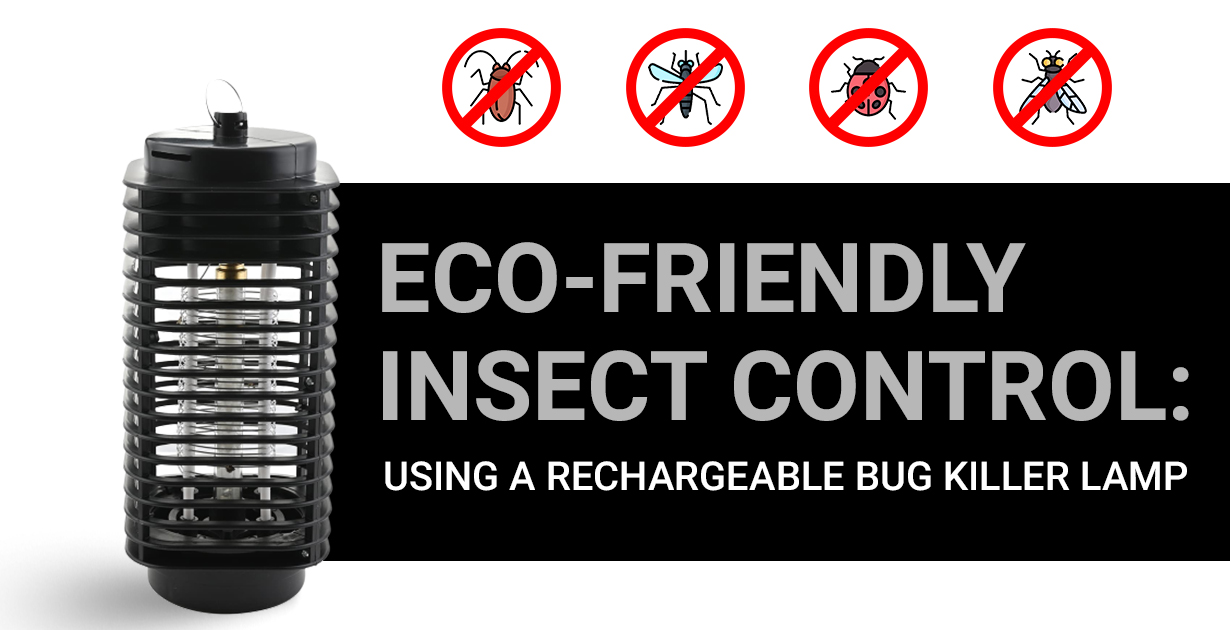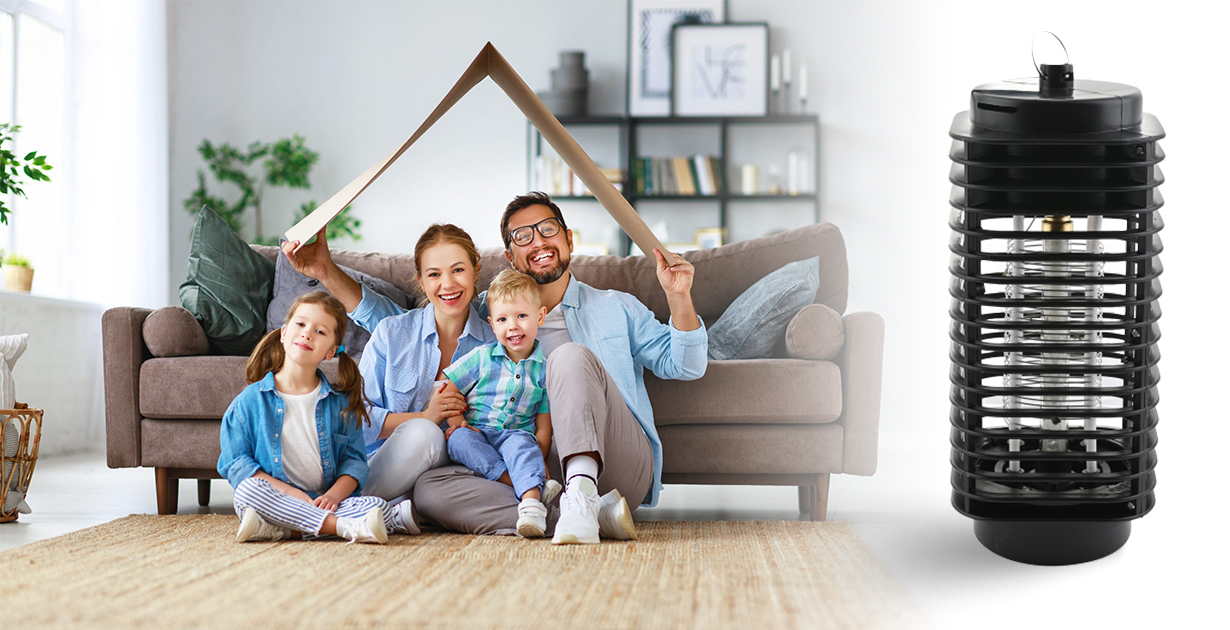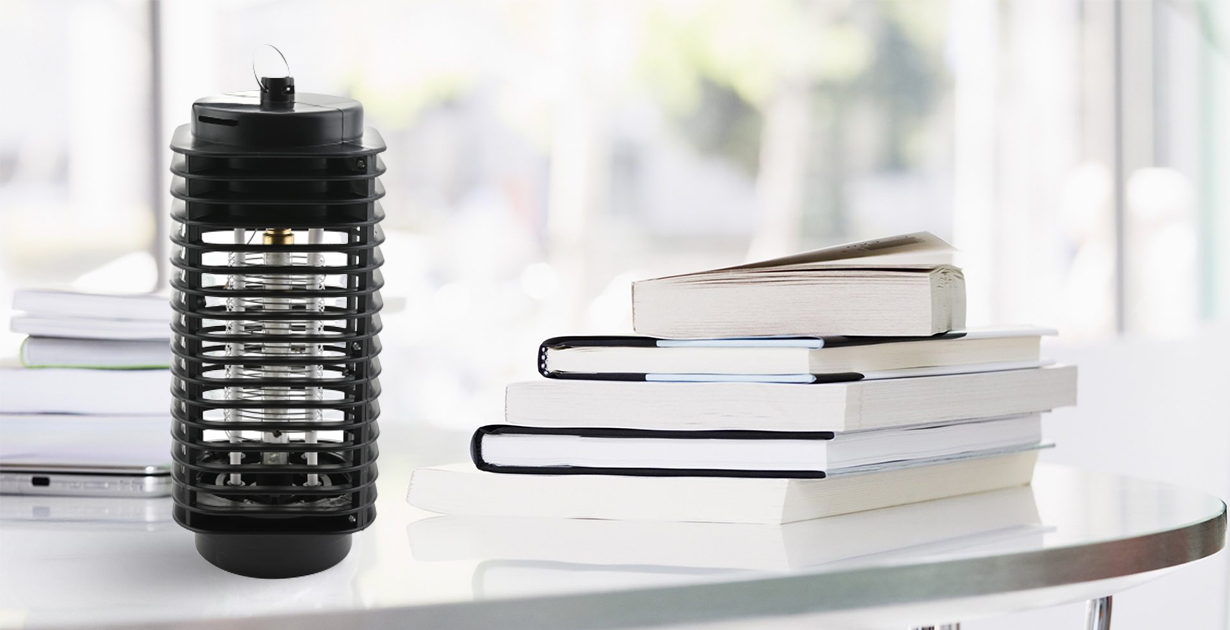
Insects can be a nuisance, especially during warm seasons when they are most active. Traditional methods of insect control often involve the use of harmful chemicals or disposable products that have a negative impact on the environment. However, there is a more eco-friendly alternative: a rechargeable bug killer lamp. In this blog post, we will explore the benefits of using a Gigawatts rechargeable bug killer lamp for insect control and how it provides an environmentally conscious solution to keep your surroundings bug-free without harming the ecosystem.
Understanding the Rechargeable Bug Killer Lamp
A rechargeable bug killer lamp, also known as an electric insect zapper, is a device that attracts insects using ultraviolet (UV) light and then eliminates them with an electric shock. These lamps are designed to mimic the warmth and brightness of human body heat, which attracts mosquitoes, flies, moths, and other flying insects. Once the insects come into contact with the lamp, they are electrocuted by a high-voltage grid, effectively eliminating them.
Environmental Advantages of Rechargeable Bug Killer
One of the significant advantages of using a rechargeable bug killer lamp is its eco-friendly nature. Unlike traditional insect control methods that involve the use of chemical sprays or disposable traps, bug killer lamps operate without the need for harmful substances. They do not release any toxic chemicals into the air, making them safe for both humans and pets. Moreover, they do not leave behind any residue or waste that could harm the environment.
Energy Efficiency and Cost Savings
Rechargeable bug killer lamps are designed to be energy-efficient. They utilize LED lights, which consume minimal power compared to traditional lighting sources. LED lights are known for their long lifespan and low energy consumption, making them an ideal choice for sustainable insect control. Additionally, the rechargeable feature of these Gigawatts lamps allows you to save on batteries, reducing both waste and costs associated with frequent battery replacements.
Versatility and Ease of Use
Rechargeable bug killer lamps are versatile and can be used in various indoor and outdoor settings. They are suitable for residential spaces, gardens, patios, camping trips, and even commercial establishments. These lamps often feature a portable design with easy installation options, such as hanging hooks or stakes, making them convenient to use in different locations. Additionally, many bug killer lamps offer multiple modes, including a light-only mode for ambient lighting, allowing you to use them beyond insect control purposes.
Non-Disruptive to the Ecosystem

Traditional insect control methods often harm not only the targeted insects but also beneficial insects such as bees, butterflies, and ladybugs. Gigawatts Rechargeable bug killer lamps, on the other hand, primarily attract and eliminate flying insects that are known pests, minimizing the impact on beneficial species. By selectively targeting pests, bug killer lamps help maintain a more balanced ecosystem while still providing effective insect control.
Health and Safety Considerations
Using a rechargeable bug killer lamp reduces the need for chemical-based insect repellents, which can have potential health risks, especially when used excessively or by individuals with sensitivities. By eliminating the need for contact with chemical sprays, bug killer lamps offer a safer and healthier alternative. However, it’s essential to ensure that the lamp is placed away from children and pets to prevent accidental contact with the electric grid.
Maintenance and Cleaning
To maintain the effectiveness of a Gigawatts rechargeable bug killer lamp, regular maintenance and cleaning are required. Many models are designed with detachable trays or trays that can be easily slid out for cleaning purposes. These trays collect the dead insects, and by emptying them regularly, you can keep the bug killer lamp functioning optimally. Cleaning the lamp with a soft, damp cloth will help remove any debris or residue that may accumulate on the surface over time. It is important to follow the manufacturer’s instructions for maintenance to ensure proper functioning and longevity of the lamp.
Responsible Disposal of Insects
When emptying the insect collection tray, it is recommended to do so in an environmentally responsible manner. Instead of simply discarding the dead insects in the trash, consider composting them if you have a compost bin or burying them in your garden. This allows the insects to decompose naturally and return to the earth, contributing to the nutrient cycle. By adopting responsible disposal practices, you can ensure that even the insects eliminated by the bug killer lamp become part of the ecological system.
Supplementing Bug Killer Lamps with Other Methods

While rechargeable bug killer lamps can be effective in reducing the population of flying insects, it is important to remember that they may not eliminate all pests entirely. To further enhance your insect control efforts, consider integrating other eco-friendly methods such as using natural repellents, sealing cracks and gaps in windows and doors, and maintaining proper sanitation to eliminate potential breeding grounds for insects. Combining these methods with the use of a bug killer lamp can create a comprehensive approach to keep your surroundings free from pests while minimizing environmental impact.
Conclusion
Gigawatts Rechargeable bug killer lamps provide an eco-friendly solution to insect control, offering numerous benefits such as energy efficiency, cost savings, and minimal environmental impact. By utilizing UV light and an electric grid, these lamps effectively attract and eliminate flying pests without the use of harmful chemicals. Additionally, they are versatile, easy to use, and non-disruptive to the ecosystem. Remember to practice responsible maintenance and disposal when using bug killer lamps, and consider supplementing their use with other eco-friendly methods to maximize your insect control efforts. Embracing the rechargeable bug killer lamp allows you to maintain a bug-free environment while prioritizing sustainability and the well-being of the ecosystem.
 Need help? Call Us:
Need help? Call Us: 

